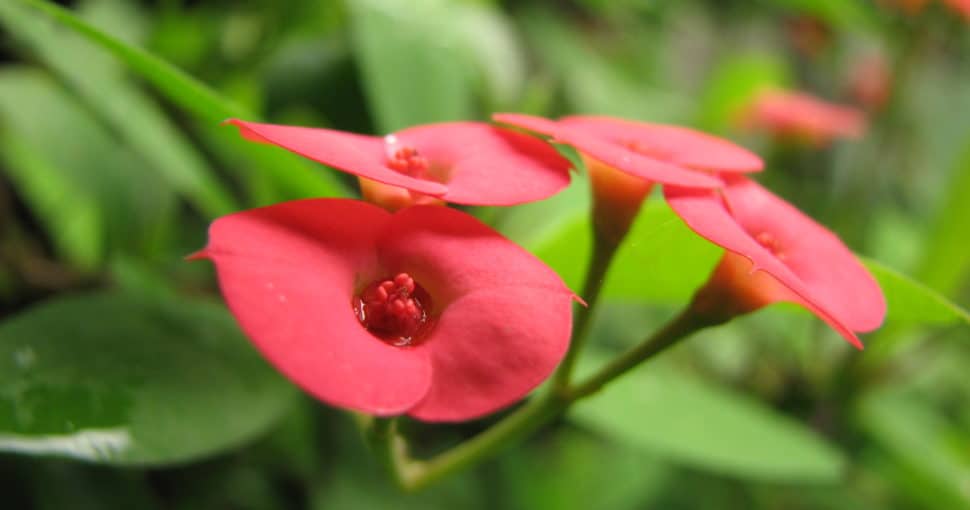When the warmer weather nears, many people may look forward to spending more time outdoors, which also includes natural landscapes like gardens and the woods. While that can be a refreshing experience and break from the busyness of city life, you should note that you could encounter several types of poisonous plants in Maryland.
Contents
- 1. Giant Hogweed (Heracleum Mantegazzianum)
- 2. Wild Parsnip (Pastinaca Sativa)
- 3. Poison Ivy (Toxicodendron Radicans)
- 4. Poison Oak (Toxicodendron Diversilobum)
- 5. Poison Sumac (Toxicodendron Vernix)
- 6. Spotted Water Hemlock (Cicuta Maculata)
- 7. Mayapples (Podophyllum Peltatum)
- 8. Belladonna Lily (Amaryllis belladonna)
- 9. Caladium (Caladium X Hortulanum)
- 10. Chrysanthemum (Chrysanthemum)
- 11. Crown of Thorns (Euphorbia Milii)
- 12. Florist’s Cyclamen (Cyclamen Persicum)
- 13. Daffodil (Narcissus)
- 14. Dumb Canes (Dieffenbachia)
- 15. Wolf’s Bane/Monkshood (Aconitum)
- 16. Mountain Laurel (Kalmia Latifolia)
- 17. Water Hemlock (Cicuta)
- 18. Sword Lily (Gladiolus)
- 19. Four O’clocks/Marvel of Peru (Mirabilis Jalapa)
- 20. Tansy (Tanacetum Vulgare)
- 21. Periwinkle (Vinca)
Some of the plants in Maryland are toxic when you come into contact with them, while others are poisonous only when ingested. In addition to that, some plants are more toxic than others. Therefore, it’s best to know about these different types of poisonous plants in Maryland if you plan to spend time outdoors.
Educating yourself on these plants can help you identify them from afar, helping you stay safe from them. In addition to that, you can also know what to tell your doctor or veterinarian if you rush someone or your pet to the ER because of accidental poisoning.
If the medical professionals know what the cause of the symptoms is, they may be able to treat it sooner than if they did not. So, this article includes descriptions of 21 poisonous plants that you may find in Maryland. All of these plants are not native to Maryland but are found here too.
1. Giant Hogweed (Heracleum Mantegazzianum)
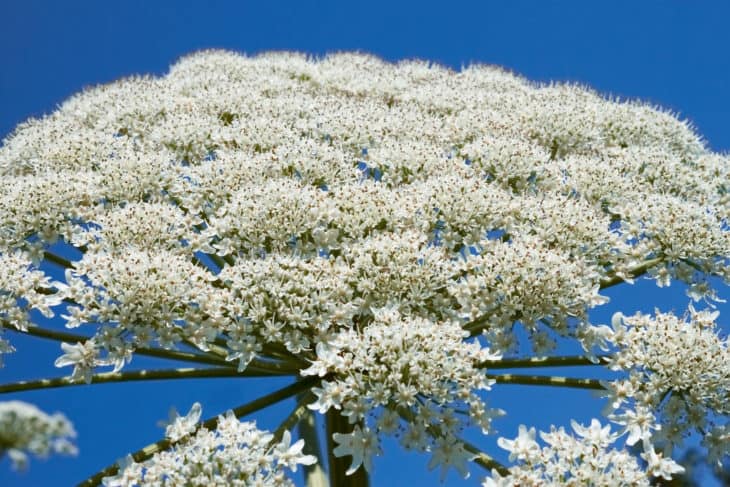
The giant hogweed plant can grow to a maximum height of about 14 feet. It has green stems with white hairs and purple blotches over them. In addition to that, it has clusters of white flowers. You can get poisoned by this plant if you come into contact with it. You may experience painful dark blisters about two days after being exposed to the plant.
2. Wild Parsnip (Pastinaca Sativa)
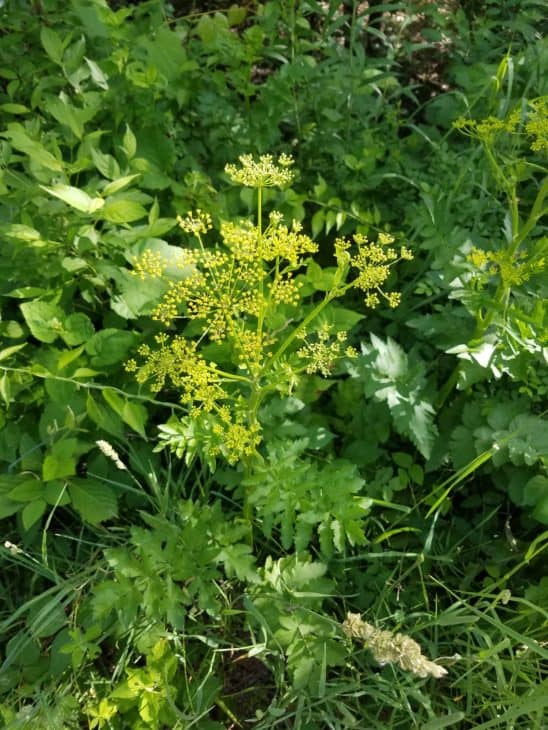
Wild parsnips are found in different parts of the United States, including Maryland. It has small yellow flowers that are clustered together. You can find these yellow weeds in open fields, prairies, or bike paths. The sap in this plant can cause light-sensitive rashes and inflammation that are extremely painful. Moreover, the rash could result in blisters and scarring.
3. Poison Ivy (Toxicodendron Radicans)
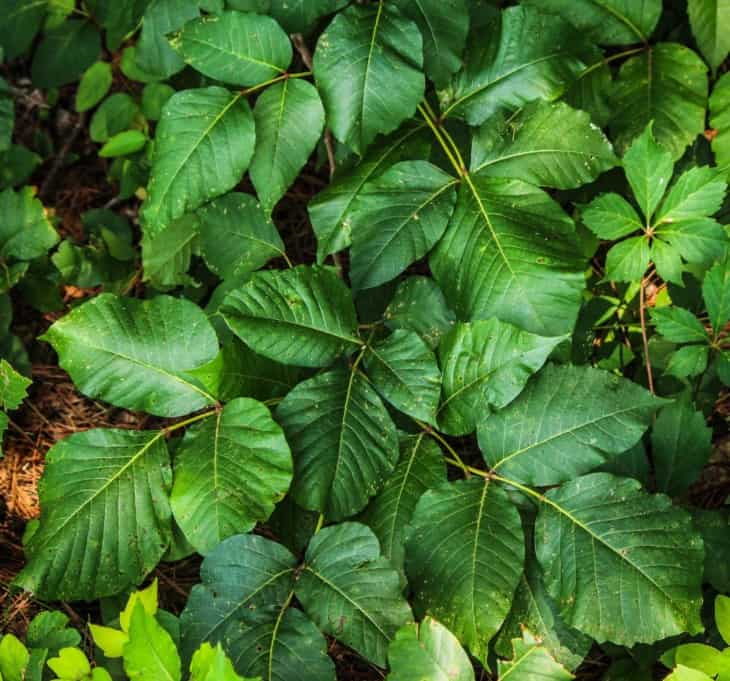
The poison ivy plant can change its color based on the season. Its non-lobed and smooth leaves that are serrated at the edges are green in the summer and match the color of surrounding leaves during the fall. This plant looks similar to poison oak and has similar symptoms, one of which includes severe dermatitis when you touch the plant.
4. Poison Oak (Toxicodendron Diversilobum)
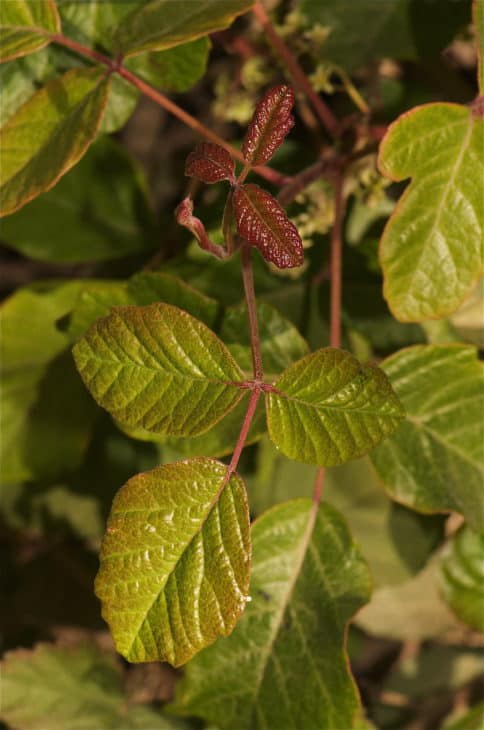
Poison oak is a bush plant like poison ivy, but it has larger and rounder leaves. The plant can grow to a maximum height of about 6 feet, and it has waxy berries on it. The berries have different colors, which can blend in well with their surroundings. The colors include yellow, green, or white. Touching poison oak may lead to an itchy red rash or severe dermatitis.
5. Poison Sumac (Toxicodendron Vernix)
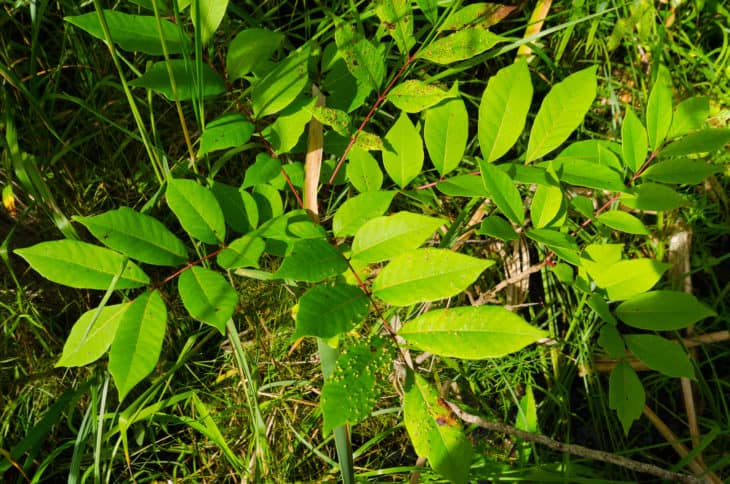
Poison sumac is a small tree that has about seven to thirteen leaflets on each stem. The leaves have pointy tips, and the plant bears small gray or white berries. You can find this plant thrives in wetland areas like swamps. Make sure not to burn poison sumac because the fumes could result in breathing problems and harmful reactions to your skin.
6. Spotted Water Hemlock (Cicuta Maculata)
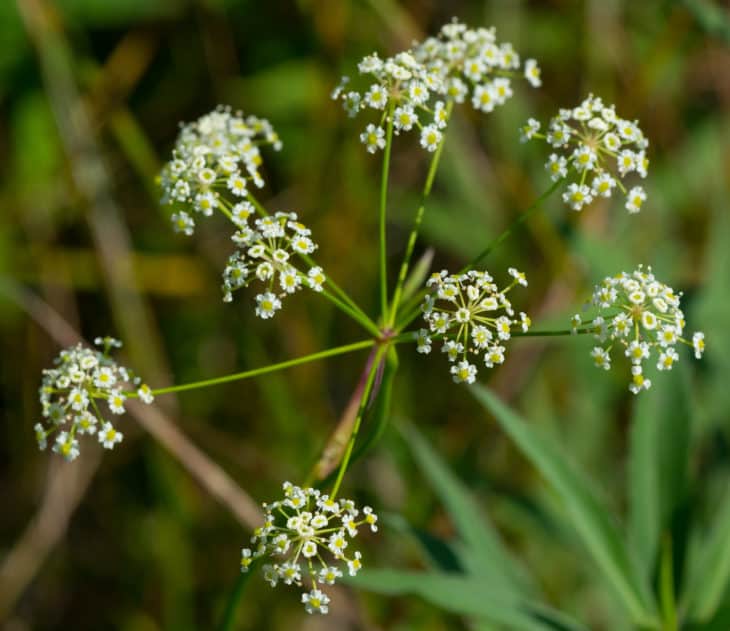
The spotted water hemlock plant is part of the carrot family. It is a flowering plant that does have other names, including spotted cowbane, suicide root, and spotted parsley. The leaves on this plant are long and have small serrated and pointed leaflets shaped like lances. You should note that this plant is extremely poisonous, making it the most toxic in all of North America.
7. Mayapples (Podophyllum Peltatum)
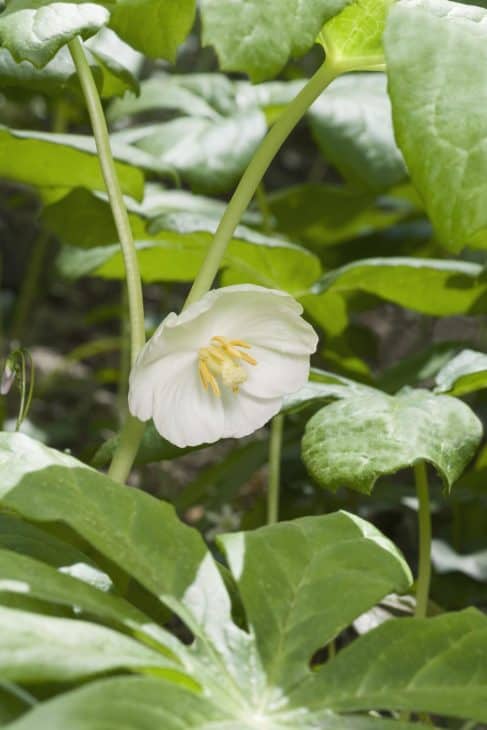
You may come across mayapples when traversing through moist and shady woodlands. This plant is shiny green with leaves shaped like two umbrellas. Also, it has large white flowers. While its fruit can be eaten, the plant is toxic. Handling its roots can lead to severe skin lesions. It’s best not to ingest any part of the plant as it’s poisonous to people and animals.
8. Belladonna Lily (Amaryllis belladonna)
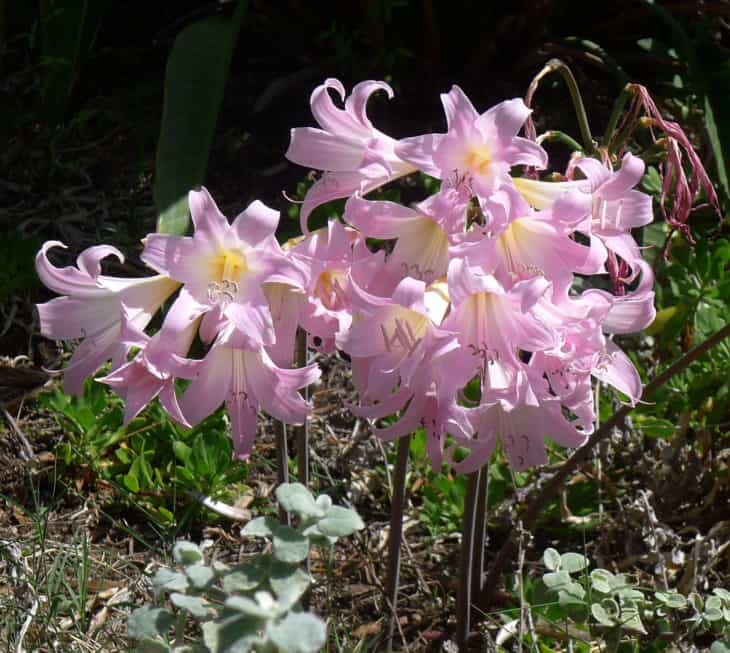
Belladonna lily is one name given to the Amaryllis plant. Other names include naked-lady-lily and Jersey Lily. This plant’s flowers are particularly showy and pretty, and they are present on naked stems during the summer. The decorative effects of this plant have made it a popular houseplant. However, all parts of it are toxic to animals and some people.
9. Caladium (Caladium X Hortulanum)
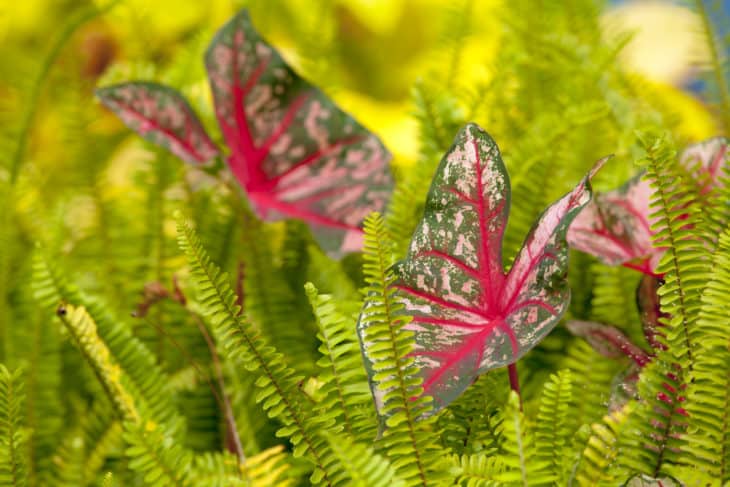
The Caladium plant is also known as elephant ears. You can identify this plant by its large leaves that are shaped like hearts. These leaves can be more attractive than many flowers, which makes the plant truly unique. The sap in the plant could result in skin irritation, so you should keep it away from children and pets.
10. Chrysanthemum (Chrysanthemum)
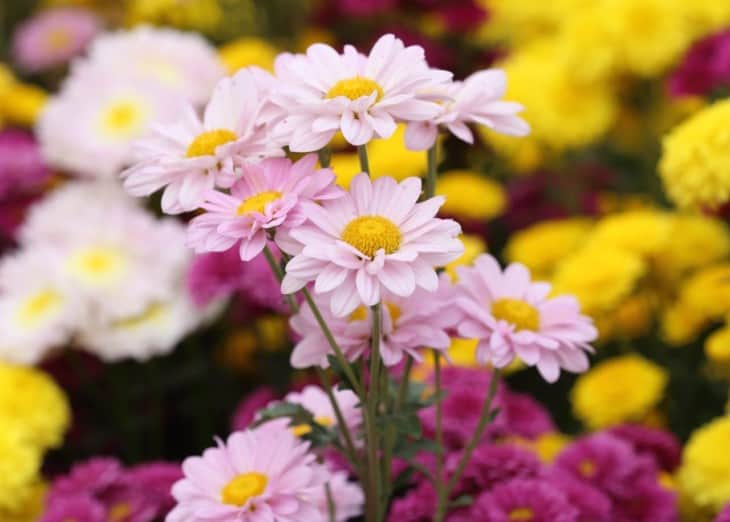
Chrysanthemums are flowering plants that are also known as chrysanths or mums. The plant only grows to about 3 feet tall and a foot wide. While the chrysanthemum plant is mostly harmless, its leaves can be harmful. It’s usually a risk to florists or those who work with the plant often. The leaves contain an oil that may result in dermatitis when touched.
11. Crown of Thorns (Euphorbia Milii)
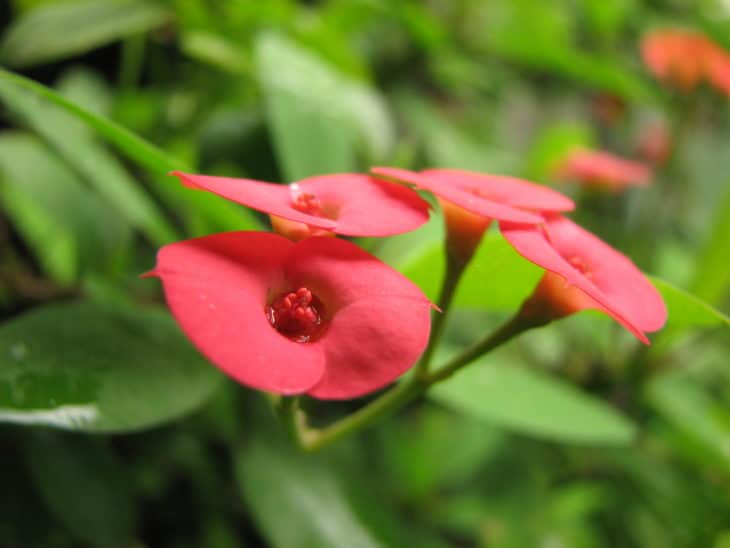
The crown of thorns plant is often kept within homes because of its decorative spines and red flower bracts. However, it does contain a milky sap in the entire plant that’s toxic to human beings and animals. Being exposed to the sap could result in inflammation, a burning sensation, and blisters. It could also cause temporary blindness if it gets in the eyes.
12. Florist’s Cyclamen (Cyclamen Persicum)

The florist’s cyclamen is a flowering plant that is disposed of after the flowers are picked. The name comes from the fact that it’s readily available at florist shops. The plant reaches about a foot in height and has decorative flowers that vary in color. The colors include deep pink, light pink, red, and white. The plant is toxic to animals, specifically dogs and cats.
13. Daffodil (Narcissus)
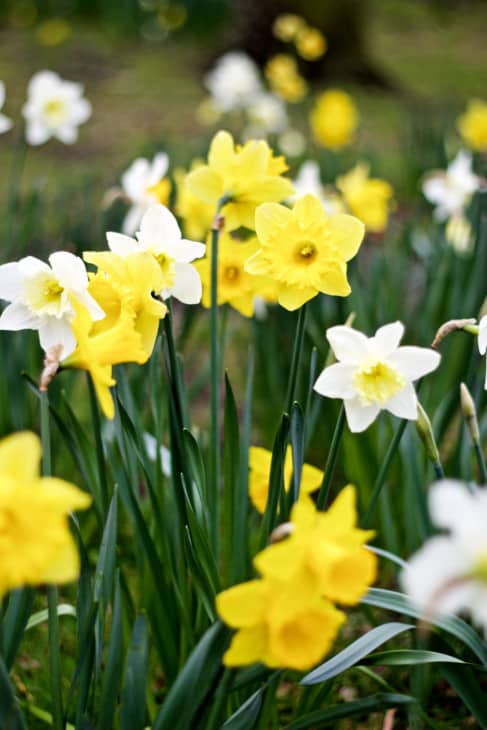
The daffodil is a perennial plant with six-petal flowers. You can identify the plant by its flowers, which have a corona that is shaped like a cup or trumpet. The flowers’ color also varies, being yellow or white in most cases and orange or pink in some garden-grown varieties. Never mistake the plant’s bulbs for onions because people have died after eating them by mistake.
14. Dumb Canes (Dieffenbachia)
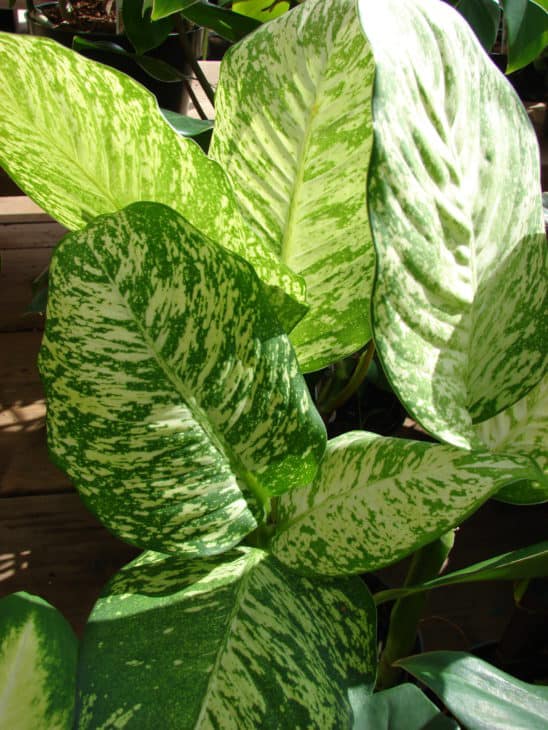
The dumb cane plant grows tall at around 6 feet. That said, its most unique feature is its wide and bushy leaves. The plant is a common houseplant for many homeowners. However, pet owners should note that it can be toxic to cats and dogs. In addition to that, don’t let children near this plant because they could experience a numbing of their throat and vocal cords if accidentally ingested.
15. Wolf’s Bane/Monkshood (Aconitum)
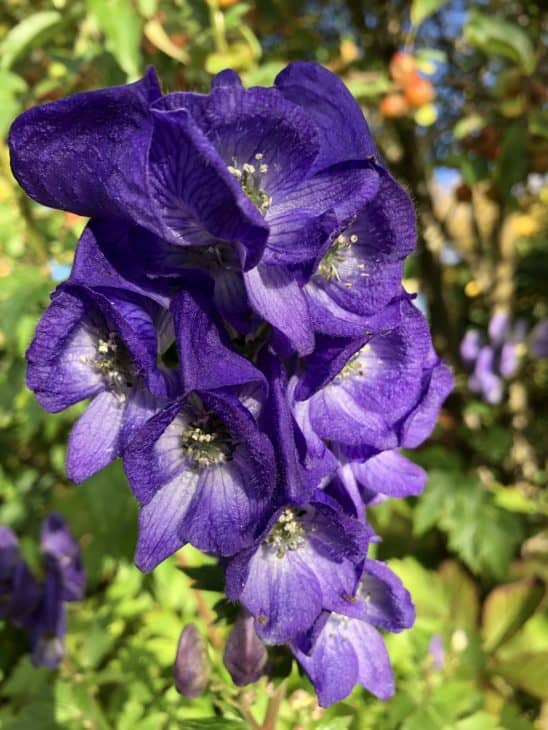
Monkshood and wolf’s bane are two popular names for the Aconitum plant. The stems on this perennial plant grow to a height of about 2 to 4 feet. The stems also have purple-blue flowers present on them in terminal panicles. Monkshood is a poisonous plant, but brushing against it or accidentally ingesting some of the plant most likely won’t be fatal.
16. Mountain Laurel (Kalmia Latifolia)
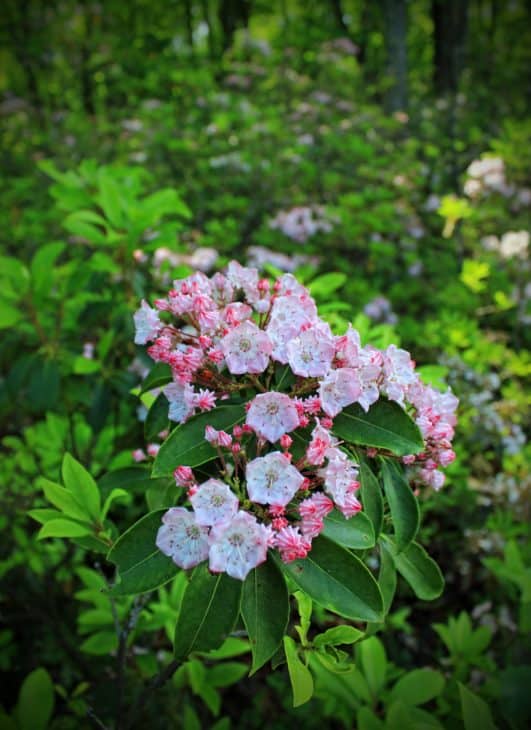
The Mountain laurel is a lowering plant with alternative names, including spoonwood and calico-bush. It is an evergreen plant that grows fairly tall, reaching a maximum height of just under 30 feet. It has long leaves and hexagonal flowers. You can find these plants in mountainous forests and rocky slopes. All parts of this plant are toxic.
17. Water Hemlock (Cicuta)
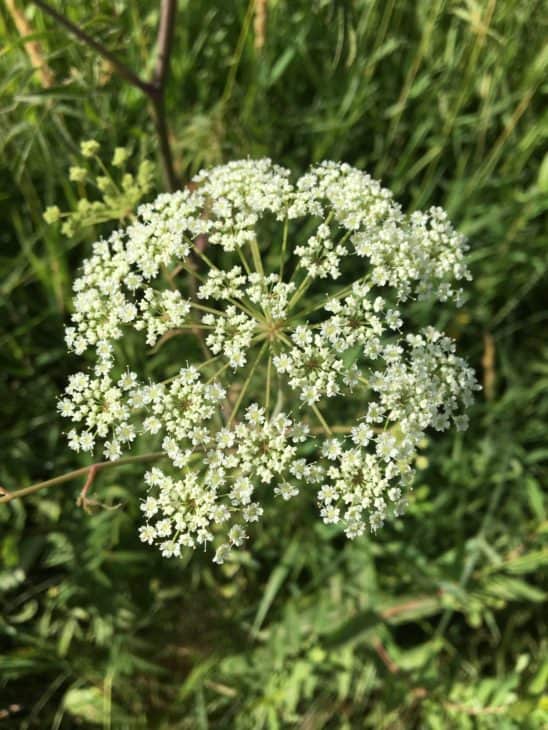
A water hemlock plant grows to about 6 feet in height, and it has bamboo-like stems that are purple or red striped. You should never ingest any part of this perennial herb, especially the roots and seeds. Also, make sure your pets stay away from them during a walk in moist or wet areas like swamps, the banks of streams, or inside ditches.
18. Sword Lily (Gladiolus)
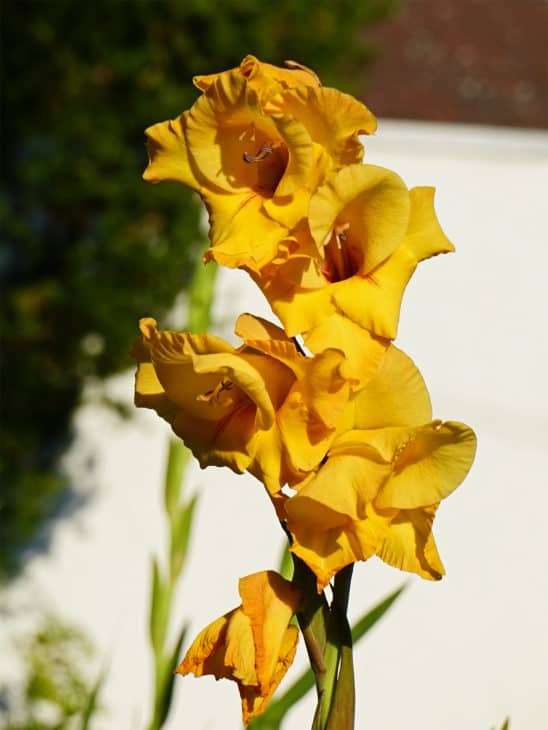
The sword lily plant is known for being a very attractive addition to a garden. This perennial plant has leaves shaped like swords in a fan-like arrangement, with flowering spikes. The entire plant reaches a height of about 2 to 3 feet at most. The bulbs are the most poisonous part of the sword lily plant. You should also note this plant is also known as corn lilies and sword plant.
19. Four O’clocks/Marvel of Peru (Mirabilis Jalapa)
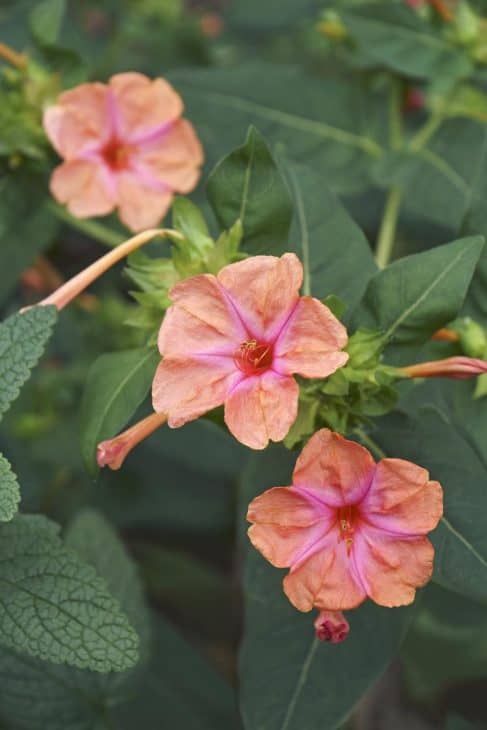
The marvel of Peru and four o’clock are two common names of the Mirabilis Jalapa plant. It is a relatively short but bushy plant with about a maximum height of slightly more than three feet. The marvel of Peru is also fruit bearing plant. Make sure to never accidentally ingest this plant’s seeds because they are very toxic.
20. Tansy (Tanacetum Vulgare)
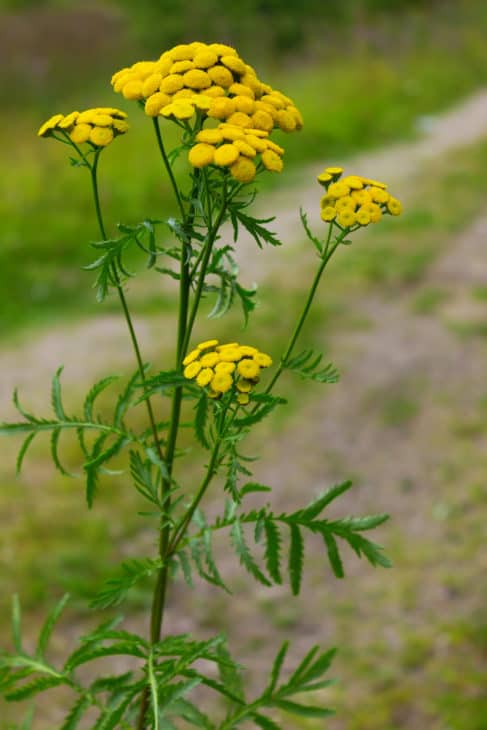
Tansy is a flowering plant that has yellow flowers that look like buttons. It is sometimes grown in gardens, and it’s been used to kill intestinal worms for centuries. Ingesting too much of the plant could result in a severely upset stomach or even convulsions in extreme cases. Among animals, ingesting it could also lead to chronic liver disease.
21. Periwinkle (Vinca)
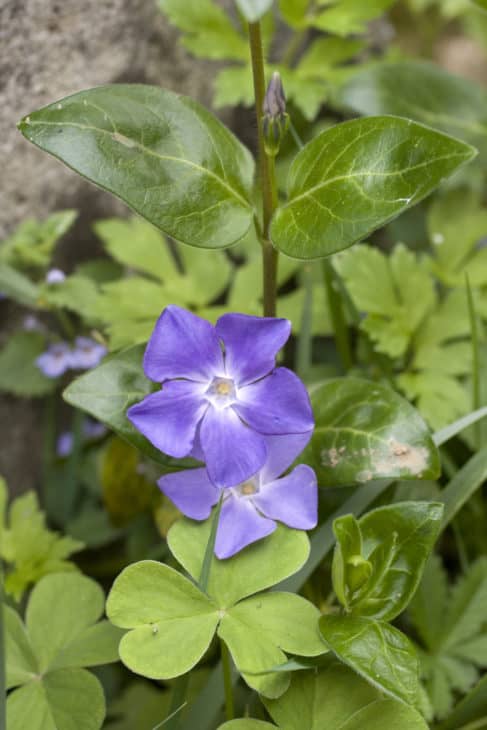
The periwinkle plant is a herbaceous flowering plant with trailing stems that allow the plant to spread rapidly. The flowers are simple, with five violet-colored petals. It also bears fruit. All parts of the plant can be toxic as the entire plant contains bitter and toxic alkaloids. Ingesting these alkaloids can result in poisoning among some people.

